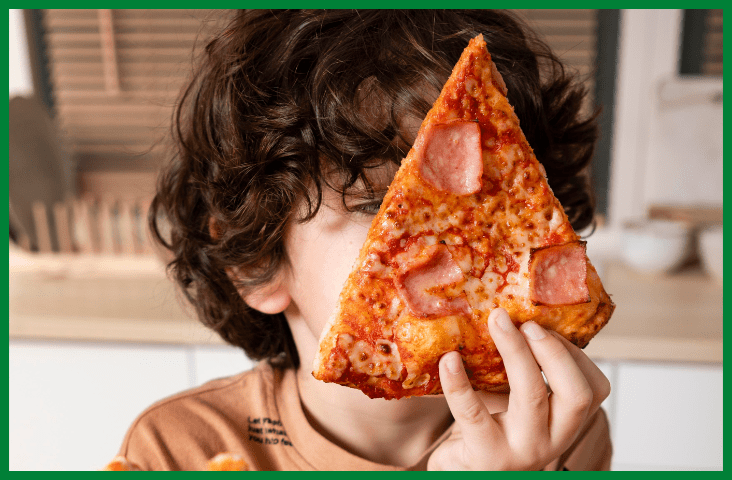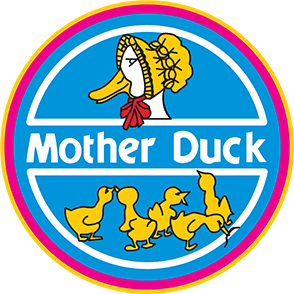
Keeping Food Child-sized: Smaller portions for smaller people
For anyone who can look back and remember mini-packets of Twisties or tiny twenty-cent bags of mixed lollies, it seems that portion sizes of lots of foods have been super-sized over the years. And we’re not imagining it – portion sizes have grown enormously over the past few decades. Australian research published in 2017 found that typical portion sizes of some foods, including pizza and cake, had increased by a whopping 66% between 1995 and 2012. That research looked at adult eating patterns but seems a valuable warning to pay attention to our children’s portion sizes as well as what’s on our own plates.
It’s not just the extra kilojoules that cause concern – many of these foods don’t provide a lot of other nutrients. That’s not great for adults, but even worse for young children who are growing and developing and have higher nutritional needs than we adults do. This means they’re at greater risk of filling up on unhealthy foods and not having the space in their little tummies for the foods their bodies do need.
Just like adults, most kids will eat more than they need if given bigger portions – this goes for healthy and less healthy foods. While there is a time and place for treat foods (not every day!), our kids need them to be child-sized treats.

Foods to watch out for
Here are a few foods that spring to my mind when I think of children eating adult-sized portions – perhaps you can think of some others:
- Packets of chips – a typical individual bag of chips is about 60 grams and over 1300 kilojoules. (The one I looked at said it contained 2.2 servings, but we all know they are more often eaten as a single serving. We certainly don’t tend to share a bag with 2.2 of our friends!) A much better option is a mini-bag from a multipack (about 20 grams) which downsizes the kilojoules to around 430.
- Muffins and cakes – research released in 2018 revealed that the average slice of cake in an Aussie cafe contains a whopping 1805 kilojoules. While two adults might often split a slice of cake, that slice would need to be shared among a tribe of children!
- Chocolate bars – a 50-gram chocolate bar contains over 1100 kilojoules, but there’s an easy solution. Go for a treat-sized bar or single sweet to cut the kilojoules. It also cuts the cost!
- Sweet drinks – even when you ask for a child-sized drink, it’s often massive. Tetra-paks of juice are at least a little smaller or ask for an extra cup to split one drink between two. You can always top juice up with water to make it look bigger, or add plain milk to a flavoured milk or hot chocolate. Of course, water or plain milk are the best usual choices.

One way to put the kilojoule content into perspective is to remember that the estimated requirement for a 2-year-old is 4400 kilojoules for boys and 4200 for girls; for moderately active 4-year-olds it’s 6600 and 6100 kilojoules. This can be useful to keep in mind when you’re looking at a treat for your children. Knowing that a 50-gram chocolate bar (1100 kilojoules) is about one-sixth of your 4-year-old’s kilojoule requirement for the day, yet provides them with very few nutrients, really puts it into perspective. As a rule, an adult ‘serve’ of treat foods should be kept to under 600 kilojoules; a child-sized serve needs to be significantly smaller than this.
Portion-control strategies
My top strategies to keep treat-food portions to smaller sizes are:
- Down-size it whenever possible – this means treat-size chocolates, or choosing a mini-muffin or cupcake rather than regular-sized muffin or cake slice. Note that the research into cake sizes mentioned above found that supermarket-bought cakes and muffins were much smaller than those from a café (and they’d also be less expensive!). Better still, if you make your own, you can usually reduce the sugar and other sweet ingredients and it tastes about the same. And you can make them as small as you like; just remember to adjust the baking time.
- Sharing is caring – it’s a great lesson for children and splits the cost and the kilojoules. Most cafes will be happy to give you an extra plate or a cup, and you could use your own bags or bowls to share a pack of chips amongst children.

- Choose a healthier ‘treat’, maybe one that is fruit- or milk-based, such as fruit leathers or a milk- or plant-milk-based dessert. At least there will be some vitamins and minerals along with the sugar.
- If at a café, offer a choice of either a drink or something to eat, rather than both. Having water and a healthy snack (maybe a piece of fruit) with you can make the choice easier.
- I think the most important point is keeping treat foods for special occasions. This teaches our children that everyday foods need to be nutritious, to fuel their growing bodies.
Protecting our children
Becoming overweight is a common problem for young children in Australia. As parents and carers, we can help to protect our little ones against foods that supply excess kilojoules but little nutrition. Being aware of the adult-sized portions so often put in front of our children is a great way to start.
© Fiona Hinton 2023
MEDICAL DISCLAIMER: Please note that this blog is for general information only, and should not be taken as a substitute for qualified medical advice. Please discuss medical issues with your child’s doctor before taking any action.
About Fiona: Fiona Hinton is a dietitian, but describes herself as a nutrition translator, taking the science of nutrition and translating it into foods we love to eat, to nourish both body and soul. She has over 20 years of experience as a dietitian, working in a wide range of areas from hospital wards to running her own private practice. Fiona has a special interest in children’s nutrition. As a mum of three school-age boys, she has first-hand experience of the issues associated with feeding young children, such as weaning and fussiness. Fiona specialises in real-life strategies and practical suggestions to convert nutrition advice into food kids will eat. Fiona has collaborated on several books, including one with best-selling children’s food writer Annabel Karmel, as well as training childcare staff in children’s nutrition.


